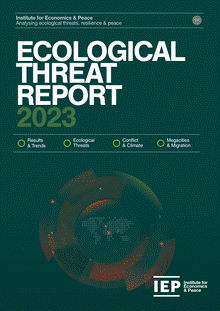- Direct Listing on Foreign Stock Exchanges
- The impact of air pollution on economic growth
- Mobility and Migration Partnership Agreement
- Ecological Threat Report 2023
- Lucy Mission
Direct Listing on Foreign Stock Exchanges
Context:
The Indian government has taken a significant step by allowing select Indian companies to directly list on designated foreign stock exchanges, providing them with access to global capital markets and enhancing India’s financial evolution.
Direct Listing vs. Initial Public Offers (IPO):
- IPO involves the creation and sale of new shares, typically with underwriters, negotiated pricing, and lock-up periods for insiders.
- Direct listing does not create new shares, doesn’t involve underwriters, has market-driven pricing, and usually lacks a lock-up period.
- It meets regulatory requirements and provides liquidity to shareholders.
Implementation of Companies (Amendment) Act, 2020:
- The Ministry of Corporate Affairs (MCA) has implemented the Companies (Amendment) Act, 2020, allowing listed and unlisted domestic companies to directly list their equity shares on the International Financial Services Centre (IFSC) in Ahmedabad.
- Section 5 grants the central government the authority to permit specific classes of public companies to list specified classes of securities on foreign stock exchanges, including GIFT IFSC, Ahmedabad.
- The government has the flexibility to exempt these listings from certain procedural requirements.
Current Listing Mechanism for Foreign Bourses:
- Previously, Indian companies relied on depository receipts, such as American Depository Receipts (ADR) or Global Depository Receipts (GDR), for overseas listings.
- Between 2008 and 2018, 109 companies raised Rs 51,847.72 crore via ADRs/GDRs. However, no Indian company pursued overseas listings after 2018.
Advantages of Direct Foreign Listing:
- Direct foreign listing empowers domestic companies to access foreign markets for fundraising, offering improved valuations, exposure to foreign currencies like the US dollar, and potential benefits for startups and unicorns.
- This move also contributes to India’s foreign exchange reserves and simplifies accounting through alignment with global accounting norms.
Challenges in Direct Foreign Listing:
Challenges include assessing whether global investors will assign similar valuations as Indian markets and the need for more detailed information regarding eligible company classes, types of listed securities, permitted foreign jurisdictions and stock exchanges, and exemptions related to procedural compliance.
The impact of air pollution on economic growth
Introduction
In light of the escalating pollution levels in both Delhi and Mumbai, studies have indicated a direct and significant impact of air pollution on GDP growth and per capita income levels. This necessitates a closer examination of the consequences.
Rethinking the Economic Impacts of Air Pollution
- Traditionally, GDP growth rates and per capita income levels were often perceived to be inextricably linked to emissions levels, leading to the belief that air pollution was an inevitable byproduct of economic growth.
- This perspective has, in turn, hindered the sense of urgency in crafting a policy response to this issue.
- However, recent research contradicts this view, demonstrating that air pollution directly and severely impairs GDP growth and per-capita income levels.
It does so by diminishing worker productivity, reducing consumer engagement in consumption-driven services, impairing asset efficiency, increasing health-related expenditures, and necessitating greater allocations for welfare, particularly within the productive age groups.
Challenges in Pollution-Prone India
- For a country like India, where vital economic centers such as Delhi NCR grapple with recurrent annual cycles of high pollution during every winter and Mumbai contends with a haze of pollution following the withdrawal of the southwest monsoon, this issue assumes alarming proportions.
Quantifying the Economic Impact
- The Reserve Bank of India’s Department of Economic and Policy Research (DEPR) has reported in its latest Currency & Finance 2022-23 publication that as of 2030, up to 5% of India’s GDP could be jeopardized due to lost labor hours resulting from climate change challenges, including extreme heat and humidity.
- If we factor in the impact of recurring annual pollution cycles in major manufacturing and service hubs, the drain on economic productivity becomes even more pronounced.
Micro to Macro: Uncovering the Wider Effects
- A World Bank paper published in June 2023, authored by A Patrick Behrer, Rishabh Choudhary, and Dhruv Sharma, provides compelling evidence of the well-documented micro-level repercussions of air pollution on health, productivity, labor supply, and other economically relevant outcomes.
- These micro-level effects aggregate into “macro-level effects that can be observed in year-to-year changes in GDP.” These findings, derived from data spanning approximately 550 districts across 25 states and Union Territories, consistent with the previously documented micro-level effects.
Regional Disparities and Economic Loss
- The impact of air pollution on India’s economy is further emphasized by a 2021 study in The Lancet Planetary Health, which examined the direct economic losses associated with air pollution in India, revealing substantial disparities among states in terms of economic losses as a proportion of state GDP.
- This discrepancy is particularly notable in states with lower per-capita GDP, such as Uttar Pradesh, Bihar, Rajasthan, Madhya Pradesh, and Chhattisgarh.
Economic Toll on Indian Businesses
A groundbreaking report from Dalberg Advisors, in collaboration with Clean Air Fund, Blue Sky Analytics, and the Confederation of Indian Industry, estimated that air pollution costs Indian businesses approximately $95 billion annually, equivalent to around 3% of India’s GDP.
Recent Data: Real-World Impact on Daily Life
Recent data further highlights the economic toll of air pollution:
- A 5% reduction in footfall was observed in Mumbai’s Linking Road shopping district during the highly polluted period between November and January.
- A rooftop solar company reported a 13% decline in the productivity of its solar panels on days with high pollution, diminishing the economic viability of solar energy in India.
- Employees at Bengaluru’s tech hub, Whitefield Corporate Zone, reported an 8-10% reduction in productivity at work.
Six Dimensions of Economic Costs
The costs of poor air quality manifest in six distinct ways:
- Lower labor productivity
- Reduced consumer engagement
- Diminished asset efficiency
- Increased health-related expenses
- Welfare losses
- Premature mortality
Methodology for Calculating Economic Impact
To calculate the impact of air pollution, the analysis relies on big data analytics, primary surveys, existing literature, and insights from various stakeholders, including air pollution experts, business leaders, and service providers.
India’s Air Pollution Challenge
- The challenge for India is evident, as over 20 of the world’s 30 cities with the worst air pollution are located within the country.
- Delhi stands out with the poorest air quality globally, with concentration levels nearly ten times the WHO target.
- A report in The Lancet ranked Delhi as the city with the highest per-capita economic loss due to pollution among major Indian cities.
- Emergency measures have been implemented, including a ban on trucks and all forms of construction in the National Capital Region.
Global Perspective: The Widespread Impact of Air Pollution
- Additionally, a report by Greenpeace Southeast Asia and the Centre for Research on Energy and Clean Air underscores the global impact of air pollution from fossil fuels, indicating that it results in three times as many deaths as road traffic accidents.
- This study estimates the economic cost of air pollution to be $2.9 trillion, roughly 3.3% of the world’s GDP.
Service Sector Vulnerability
- The service sector is not immune to the repercussions of air pollution. A study titled ‘The Effect of Pollution on Worker Productivity: Evidence from Call-Center Workers in China’ reveals that for every 10-unit increase in the air pollution index (API), worker productivity in call centers declined by 0.35%.
- Although call duration remained unaffected, workers spent more time on breaks.
Path Forward: Addressing the Air Pollution Crisis
In moving forward, it is imperative for India to address the issue of vehicular pollution through policy measures, reduce stubble burning while channelling it for more constructive use, promote clean fuel for sustainable economic growth, and incorporate principles of sustainable development into planning and urbanization.
Mobility and Migration Partnership Agreement
India-Italy Mobility and Migration Partnership Agreement
Agreement Highlights
- India’s External Affairs Minister recently signed the Mobility and Migration Partnership Agreement with Italy, accompanied by the Cultural Exchange Programme.
- This agreement aims to promote the movement of workers, students, and professionals while addressing challenges related to illegal migration.
Agenda Focus
- Discussions during the signing focused on strengthening the defense and security partnership, exploring collaboration in agro-tech, innovation, space, defense, and the digital domain.
- Leaders also addressed global issues such as the situation in West Asia, the Ukraine conflict, and the Indo-Pacific landscape.
Historical and Cultural Ties
- Ancient Civilizations, Young States
India and Italy, both ancient civilizations, only became young states relatively recently, with Italy’s reunification in 1861. Nevertheless, these two cultures have known, interacted, and traded for over 2,000 years.
Economic Relations
- Trade and Investment
- Italy ranks among India’s top five trading partners in the European Union and is the 12th largest investor in India.
- India has maintained a trade surplus with Italy since the early 1980s.
- Key imports from Italy include machinery, machine tools, metallurgical products, and engineering items, and numerous large Italian companies operate in India.
Cultural Exchange and Scientific Cooperation
- Cultural Collaboration
- The cultural cooperation agreement, established in 1976, includes the Cultural Exchange Programme (CEP) fostering the exchange of students in language programs and academic courses.
- Several Italian universities offer courses in Indian art, history, and languages, with a focus on Hindi and Sanskrit. ‘La Sapienza’ University in Rome hosts an ICCR Chair on Modern Indian History.
Scientific and Technological Collaboration
An Agreement on Science and Technology Cooperation has been in place since 1978, allowing for joint research projects through triennial action plans.
Indian Diaspora in Italy
Community and Contributions
Italy hosts the second-largest Indian community in Europe, after the United Kingdom, with more than 160,000 Indian nationals residing in the country. The first-generation migrants primarily engage in economic sectors such as agriculture, dairy farming, the leather industry, construction, and the service industry.
Ecological Threat Report 2023
Introduction:
In the 2023 Ecological Threat Report, it was disclosed that over half of the countries facing severe ecological threats are located in sub-Saharan Africa, highlighting the significant environmental challenges present in the region.
The key findings from the report include:
- The combination of ecological threats like rapid population growth, water risk, and food insecurity, coupled with climate change, is expected to result in widespread population displacement and conflicts.
- A 25% increase in food insecurity raises the risk of conflicts by 36%, and a similar surge in the number of people lacking access to clean drinking water increases the likelihood of conflict by 18%.
- Currently, 1 billion people reside in 42 nations grappling with severe food insecurity.
- Globally, 1 in 4 individuals do not have consistent access to safe drinking water.
- It is projected that by 2050, the number of people living in countries facing severe ecological threats will reach 2.8 billion, up from the current 1.8 billion.
About Report
- The Ecological Threat Report 2023 is the fourth edition of this report, which assesses ecological threats in 221 independent states and territories.
- It is produced by the Institute for Economics & Peace (IEP) and covers 3,594 sub-national areas, accounting for 99.99% of the world’s population.
The report evaluates threats related to food insecurity, water risk, natural disasters, and demographic pressure.
Lucy Mission- To Study Jupiter’s Trojan
Overview
Lucy is an upcoming NASA space mission to study the Jupiter Trojan asteroids. The mission is scheduled to launch in October 2023 and will fly by six Trojan asteroids over a period of 12 years. Lucy is the first mission to study the Trojans, which are thought to be remnants of the early solar system.
Scientific Objectives
The scientific objectives of the Lucy mission are to:
- Study the diversity of the Jupiter Trojan asteroids in terms of their composition, surface features, and internal structure.
- Determine the Trojans’ role in the formation and evolution of the solar system.
- Investigate the potential of the Trojans to harbor icy bodies and other potential resources.
Instruments Lucy carries three scientific instruments:
- The L’LORRI (Lucy’s Long-Range Reconnaissance Imager) is a high-resolution camera that will take images of the Trojan asteroids from a distance.
- The TES (Thermal Emission Spectrometer) will measure the infrared radiation emitted by the Trojan asteroids, which will provide information about their composition and surface features.
- The Ralph instrument is a visible and near-infrared spectrometer that will measure the composition of the Trojan asteroids’ surfaces and atmospheres.
Mission Profile
- Lucy will launch in October 2023 and fly by its first Trojan asteroid, Eurybates, in August 2025.
- The mission will then fly by five more Trojan asteroids over the next 12 years:
- Polymele (September 2027)
- Leucus (November 2028)
- Orus (April 2030)
- Patroclus and Menoetius (August 2033)
Lucy will fly by each Trojan asteroid at a distance of about 200 miles, taking images and collecting data with its scientific instruments.
Significance
- The Lucy mission is the first mission to study the Jupiter Trojan asteroids, which are thought to be remnants of the early solar system.
By studying the Trojans, Lucy will help scientists to better understand the formation and evolution of the solar system.






